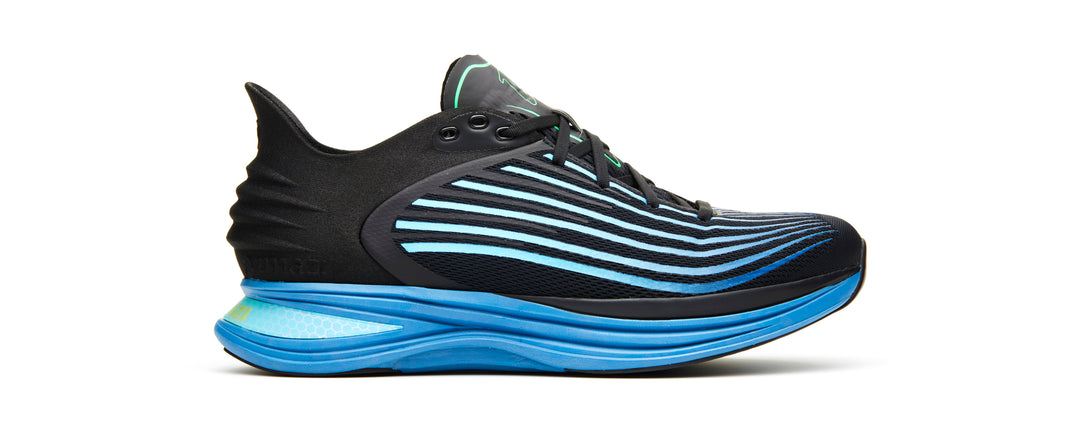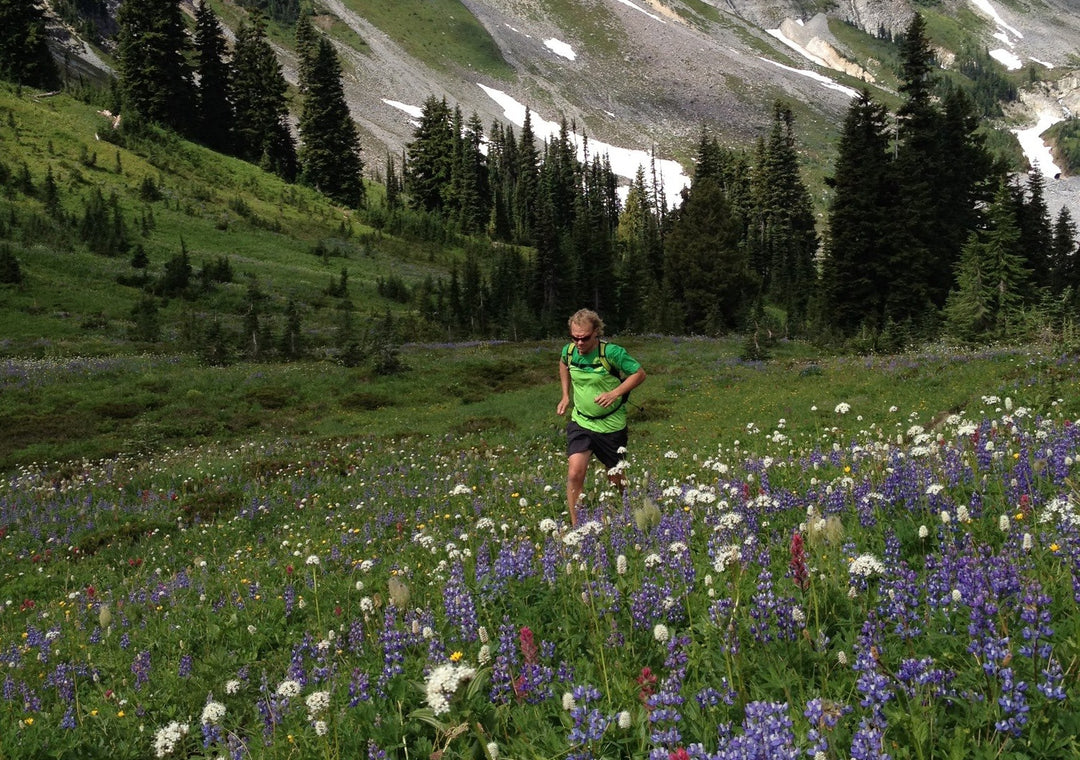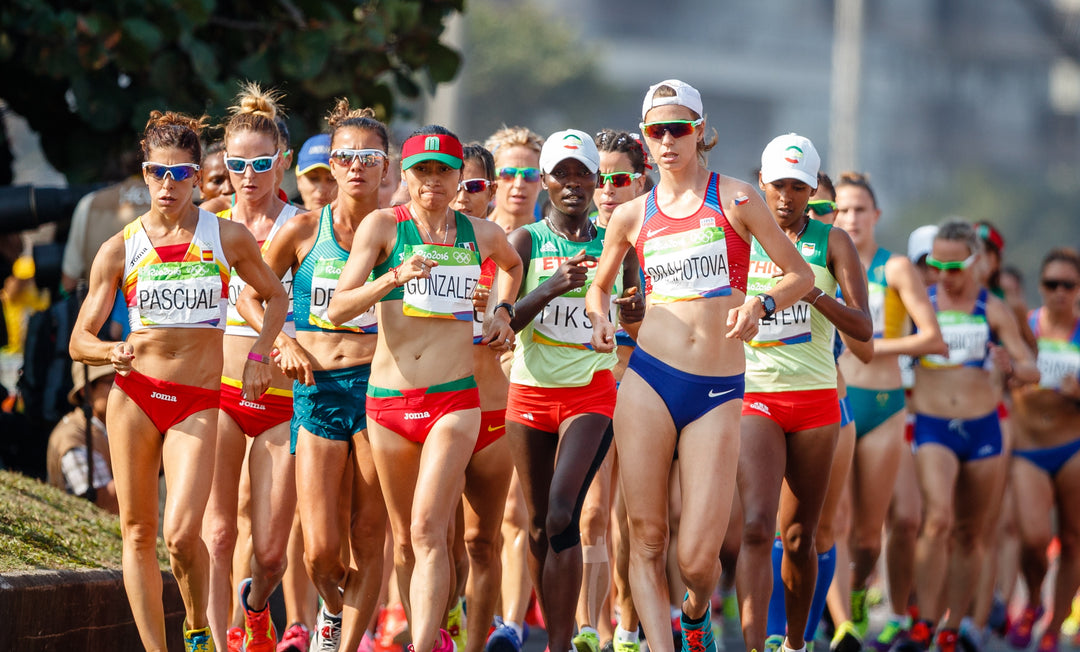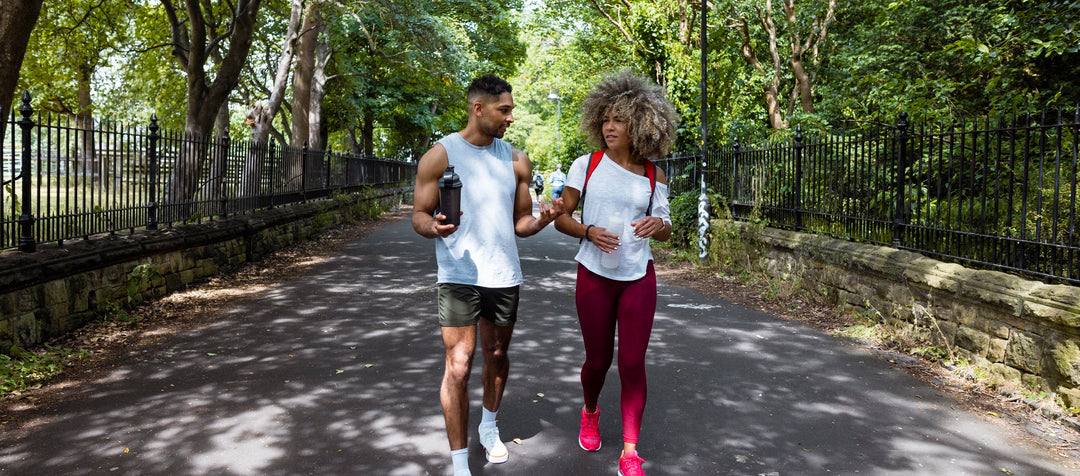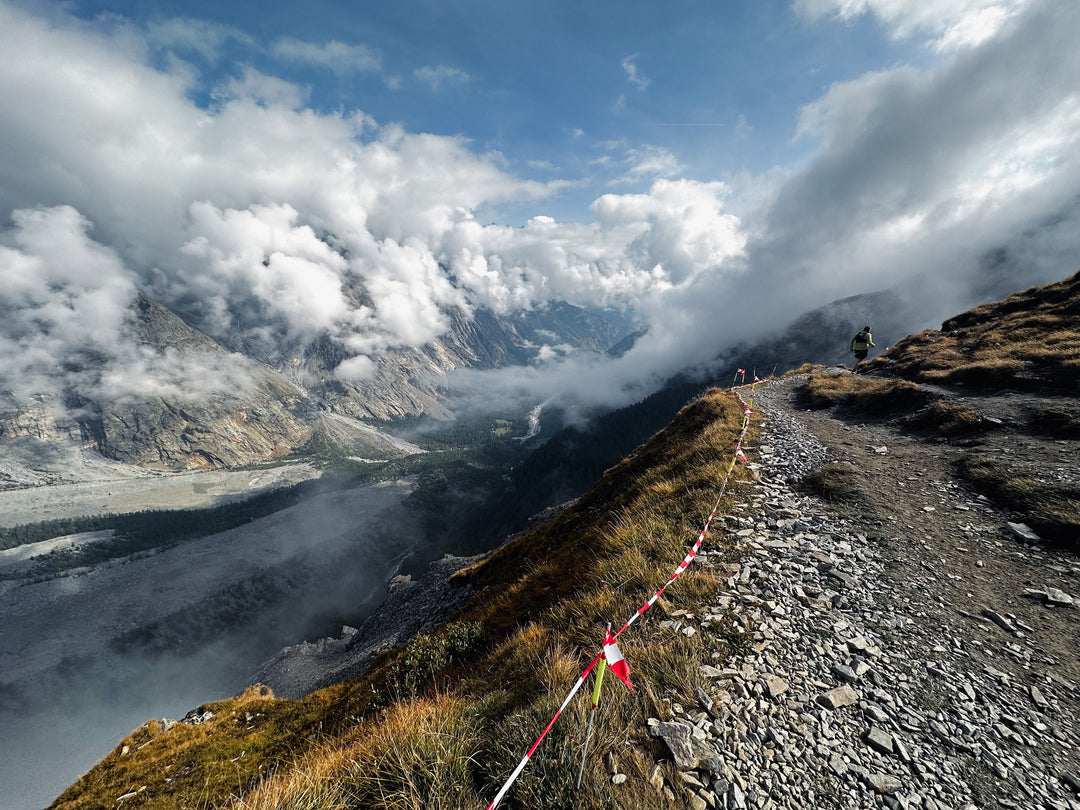Here’s the shoe that made it happen.
Former Montrail CEO Menno van Wyk, now in his mid 70s, figured he was done running. But a shoe changed all that. A long time runner, Menno ran everything from 5Ks to ultra marathons and saw himself as a runner. It was part of his social circle and who he was. Starting in his early 60s, however, his quads, hamstrings, and lower back became more and more of a problem whenever he’d run. Anything faster than a walking pace hurt. So he stopped running and focused on walking, hiking, climbing, and skiing. But as a long-time shoe dog from his Montrail days, he became intrigued when Scott Tucker and John Zilly designed and developed a new business, Vimazi, built around the revolutionary technology of pace-tuned shoes. Menno tested a pair of Vimazi Z70s. Gradually he added a few strides of running to each of his walks. He then started adding a minute or two of running into his walking program. Over the next six months, he was able to jog and run up to 4 miles at a 12 minute/mile pace. He attributes much of his running transformation to the Vimazi Z70. He doesn’t think he could have done it without them. We caught up with Menno to talk about when he started running, how he got involved in Montrail, and his new favorite shoe—the Vimazi Z70. Our conversation was edited for length and clarity.
Vimazi: When did you start running?
Menno: I didn’t take up running until I turned 33. At the time, I had just started working for a large corporation and needed a break from endless staff meetings not to mention all the internal politics. Eating lunch in the cafeteria with fellow desk jockies every day didn’t cut it either. Fortunately, some of my colleagues were into running during our lunch hour. So when they invited me to join them, I found my tribe and began running with them.
It took a while to get started, jogging at first, gradually increasing the pace and distance. I began participating in 5Ks and 10Ks during my first year. The next year, I increased my mileage and ran a half marathon, and by age 35, I ran the Seattle Marathon in just under 3:30. By then I was totally hooked.
V: How’d you come to lead Montrail?
M: In the summer of 1992, my son and I backpacked the Bailey Range Traverse on the Olympic Peninsula. It was a grueling 8-day backpacking trip with lots of elevation changes in challenging terrain. Back then serious hikers and backpackers wore big leather hiking boots for such trips. So I rented a pair of old school leather boots - super stiff, incredibly heavy, and built to last! They say you should break in your boots, but these boots broke me. My feet ached, terrible blisters, I could hardly walk. If I hadn’t rented them, I’d have ditched them on the trail. They’d probably still be there!

That experience motivated me to find a better, more comfortable hiking boot. After some searching, I found a local company distributing European made One Sport expedition boots and climbing shoes, as well as other outdoor gear. The local company had recently started making lighter and more comfortable hiking boots and trail shoes under the One Sport label. But when I looked for them in local outdoor shops, they appeared to be sold out.
After contacting and working with the local company over the next few months, I was impressed with their new range of lighter weight and much more comfortable footwear. But when their local bank pulled their line of credit, I started a new company which bought their hiking boot assets and helped them liquidate the rest of their inventory. So that we could sell in both the US and throughout the world, we eventually changed the company and brand name to Montrail. I served as Montrail’s CEO until 2006, when we were purchased by Columbia Sportswear.
V: Montrail was known for its trail running shoes. How’d you all move from boots to trail running shoes?
M: Boots were already getting lighter, so we decided to create a line of running shoes specifically designed for trail running. No one else was really doing it. Nike had developed the Lava Dome, but the category wasn’t big enough for them so they appeared to abandon it. We were helped substantially by a large and frustrated group of trail runners, who were unhappy with conventional running shoes from all the other brands. By listening to and incorporating their suggestions into our new prototypes, we launched our TGV series (the Vitesse and GrandVitesse) of trail running shoes, and we were literally off to the races! Scott Tucker, Montrail’s V.P. of Product and eventually Montrail President, worked with Scott McCoubrey, Montrail’s Trail Running Promotion Manager, to oversee the design, development, manufacturing, marketing, and promotion of our entire trail running category here in the U.S. as well as internationally. By 2006, Montrail was a clear category leader, our sales were growing over 25%/year, with an increasing global presence.
V: When did you stop running?
M: After selling Montrail in 2006, I continued running—primarily short morning jogs, nothing too strenuous. But within a couple of years or so, I had to cut back and eventually quit running altogether. With quads and hamstrings tightening, and lower back pain worsening, it got to a point where every step hurt. Fortunately, other athletic outlets like hiking, climbing, and skiing filled the gap, so I didn’t think too much about it.
But over time I missed running. Whenever I’d try taking a few running strides while out walking, it always felt too painful and I’d slow down to a walking pace.
V: So how’d you get back into running after so many years?
M: Well, I knew I needed more exercise and kept thinking about trying to run again. In the meantime, Scott Tucker kept me apprised of his research and development efforts into the concept of designing running shoes specifically for the pace at which runners were running. As he validated the science, and developed early samples for me and others to evaluate, it became clear that the technology was sound. The product was innovative and potentially transformative. But it wasn’t until he had working prototypes that could be field tested, that I realized the full potential of these new shoes.
V: So you got a pair of Vimazis?
M: That’s right. I got a pair of Vimazi Z70s, which are tuned for 10-13 minutes per mile, my eventual goal. I started off alternating walking and jogging for at least two miles then increasing the distance up to 4 miles. After about three months, I was able to jog the entire 4 miles at a 12 minute pace in my Z70s. I particularly liked the combo of cushioning in the heel and mid-sole with stability in the forefoot—that’s something most “max cushioned” shoes don’t have. The soft landing on my heel, plus the smooth natural transition to a firm toe off made for an efficient and comfortable stride.
So at the age of 77 I’m now enjoying my newfound walk/jog/running regimen. It’s not about setting any speed or distance records. After all, until Vimazi came along, I was convinced my running days were over. I walk/jog/run for the sheer pleasure of being outdoors, without pain or discomfort. I don’t think I could have done it in any other shoe.
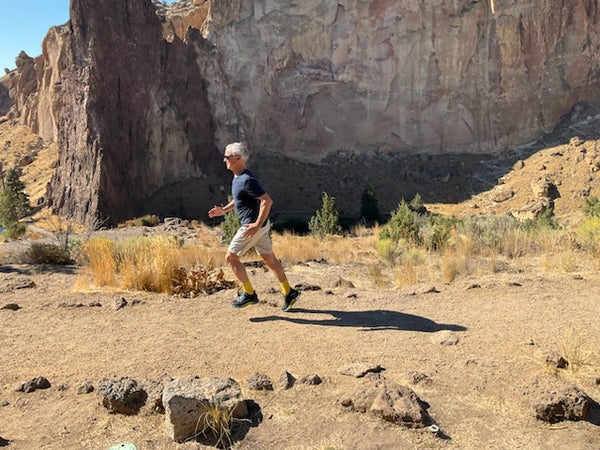
V: What would you say to other runners about Vimazi?
M: Vimazi has shoes meant for faster paced runners too, and I’m sure they’re great and perform best for those folks. But look, slow runners make up the majority of the running population. And I think on the whole we’ve been underserved by the big running brands out there. Those companies just don’t make shoes for people like me. I appreciate that Vimazi created a shoe for the way I run. Most runners run in the 10-14 minute per mile range, so if a company makes running shoes especially for us, that’s great. I love that, and I think lots of other runners will too.
V: So you think this will change the running shoe world?
M: Definitely, we need to stop being defensive about being slow runners. Just like any runner, I like having good cushioning, I want to improve my fitness, and I want to experience running at the pace I choose. If a shoe’s made for my pace, I’m all over it.
Cushioning is big, especially for older runners and walkers. I know lots of people who say “I’m not a runner, but I love my Hokas.” They like the cushioning. But in my experience, those shoes are actually harder to run in because the push off is super squishy. Yes, the cushion is good but the push-off isn’t lively and doesn’t feel propulsive.
I like that fact that Vimazi is taking cushioning to the next level by tuning shoes to pace zones and at the same time making sure the push-off is stable and secure. That’s how my Z70s feel. They give me an excellent transition from soft landing to controlled toe off while I’m walking, jogging or running.
Honestly, it’s just great to be running again.





